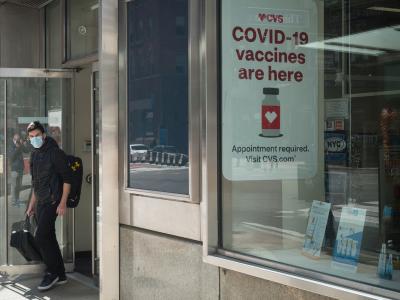New case of MERS recorded in Jeddah, Saudi Arabia
Saudi Arabia's ministry of health (MOH) reported a new MERS-CoV case today in the city of Jeddah. The notice came in an epidemiologic week 2 notification.
The patient is a 75-year-old man who is hospitalized for his MERS-CoV (Middle East respiratory syndrome coronavirus) infection. The man did not have camel contact. The source of his infection is listed as "primary" and community acquired, meaning it is unlikely he contracted the virus from another person.
The new case likely lifts on the global total since 2012 to 2,285 cases, at least 806 of them fatal. It is the fourth Saudi MERS case of 2019. The other three were in Riyadh.
Jan 9 MOH report
Study: Pregnant women with H1N1 have more adverse birth outcomes
Pregnant women who suffered from severe H1N1 influenza the 2009 pandemic were more likely to experience adverse birth outcomes, including preterm infants, low-birth-weight infants, and infants with low Apgar scores than women who did not have influenza during pregnancy, according to a study today in Birth Defects Research.
The study followed pregnancies from April to December of 2009 recorded by five state health departments across the United States. Researchers compared birth outcomes from 490 pregnant women with influenza, 1,451 women without reported influenza with pregnancies in the same year, and 1,446 pregnant women without reported influenza with prior-year pregnancies.
Sixty-four women with H1N1 influenza were admitted to the intensive care unit and had an increased adjusted relative risk of 3.9 for having preterm births (before 37 weeks gestation). The adjusted relative risk for low-weight infants and infants with Apgar scores under 6 was 4.6 and 8.7, respectively.
"The message of this work is particularly timely in the midst of the current influenza season. Our study found that severely ill women with 2009 H1N1 influenza during pregnancy were more likely to have adverse birth outcomes—such as their baby being born preterm or of low birth weight—than women without influenza," said senior author Sonja Rasmussen, MD of the University of Florida in a press release from Wiley, the journal's publisher. "These findings support the importance of pregnant women receiving the influenza vaccine and of prompt treatment with antiviral medications for pregnant women suspected of having influenza."
The current flu season has been dominated by the 2009 H1N1 strain of influenza A.
Jan 9 Birth Defects Res study
Jan 9 Wiley press release
Fourth vaccine-derived polio outbreak emerges in DRC
The World Health Organization (WHO) said yesterday that two new genetically linked circulating vaccine-derived polio type 2 (cVDPV2) cases from Haut-Katanga province in the Democratic Republic of the Congo (DRC) mark the country's fourth distinct outbreak of cVDPV2 since June 2017. So far 42 cVDPV2 have been confirmed, including 20 in 2018.
The new cases from Haut-Katanga's Mufunga-Sampwe district involve an 11-year-old child whose acute flaccid paralysis symptoms began in Oct 6 and a 29-month-old child—a known contact of the first—whose symptoms began on Oct 7.
In response to the ongoing outbreaks, the WHO and partners have taken response steps, including deploying monovalent oral polio vaccine type 2, but operational problems and underimmunization of high-risk populations continue to hamper full implementation, preventing the response from adequately controlling the outbreak and preventing its spread. "The recent emergence of the fourth outbreak of cVDPV2 from Haut Katanga can potentially be attributed to the prior use of mOPV2 and may be related to the response program’s current limited capacity to adapt effectively and implement necessary corrective measures in a timely manner," the WHO said in its statement.
Two large campaigns in September and October targeted 12 million children in 16 of 26 DRC provinces with monovalent vaccine. The WHO added that the national risk from the outbreaks is very high and the threat of international spread, especially to the DRC's neighbors, is also high because of circulation near international borders.
Jan 8 WHO statement
In other polio developments, WHO Director-General Tedros Adhanom Ghebreyesus, PhD, just wrapped up a 4-day visit to Afghanistan and Pakistan, and polio eradication was a major agenda item, the WHO said today in a separate statement. The two countries are the only ones that reported wild poliovirus cases in 2018.
Tedros and WHO Eastern Mediterranean Regional Office Director Ahmed Al-Mandhari, MD, MPH, met with heads of state and senior government officials to observe WHO-supported programs.
According to the WHO statement, Tedros recently became chair of the Polio Oversight Board, which oversees the Global Polio Eradication Initiative. The WHO said the step is a clear sign that eradicating polio is a priority for the WHO.
Jan 9 WHO statement
WHO details yellow fever cluster in Edo state, Nigeria
The WHO today released new details on the cluster of yellow fever cases in Edo state, a Nigerian region about 250 miles east of Lagos.
According to the WHO, from Sep 22, 2018, through Dec 31, 2018, a total of 146 suspected (32 confirmed cases), including 26 deaths (case-fatality rate of 18%), have been reported across 15 of 18 local government areas in Edo.
"The current outbreak of YF in Edo State in Nigeria is unusual in scale and severity, and the number of cases in time and place is very high in the context of the current national outbreak," the WHO said. "The seasonal timing of the outbreak, in a period where many travellers enter the state from other states and countries for the holidays in December–January, adds to the risk for potential spread."
Initially, the recent spike of yellow fever cases in Edo was assumed to be Lassa fever, which is endemic in that region. The cluster of yellow fever cases in the state is part of a broader yellow fever outbreak that has been ongoing in Nigeria since September of 2017.
Despite a recent vaccination campaign, the WHO said overall immunity against yellow fever is low in Edo state, and recommends that all residents and visitors to the region over 9 months of age be vaccinated against the virus.
Jan 9 WHO statement
Probe of travel-linked cases uncovers 'hidden' Zika outbreak in Cuba
A large unreported outbreak of Zika occurred in Cuba in 2017, according to a study of travel-linked cases that were detected in the United States and Europe. An international research team, including several from Florida, reported their findings on Dec 14 in the preprint server bioRxiv.
Researchers said though the epidemic seems to have tailed off in the Americas, it's unclear if lingering transmission is ongoing, because of surveillance gaps. To identify places in the Americas where Zika might still be circulating, they looked at travel-linked cases to see if there were pockets of transmission not identified by local reporting.
The team examined suspected and confirmed Zika cases reported to the Pan American Health Organization (PAHO) and travel-associated cases reported by the Florida Department of Health and the European Centre for Disease Prevention and Control, constructing epidemiologic curves to compare with reports from PAHO. They observed a spike in Zika cases from travelers returning from the Caribbean during the summer of 2017 that didn't track with local reports. Patients' travel histories found that, from June 2017 to October 2018, more than 98% came from Cuba. During this time, however, Cuba reported no local Zika cases to PAHO or other international public health agencies.
Cuba's outbreak appears to have peaked in 2017, with waning transmission into 2018, with modeling projections hinting that the country's outbreak was as large as those on other Caribbean islands that had peaked a year earlier.
Sequencing of viruses from travelers infected in Cuba revealed multiple Zika virus introduction into the country from multiple Americas locations during the summer of 2016, which corresponded to peak Aedes aegypti activity.
When the scientists looked at reasons for Cuba's delayed outbreak, they found that conditions in Cuba may have supported a large outbreak in 2016, but it may have been stalled by a countrywide mosquito control program.
The team concluded that although an aggressive mosquito control program may have mitigated Zika transmission, in the absence of vaccines, herd immunity, or strong international coordination, such control measure need to be maintained to be effective. They also said the study shows that Zika may be "silently" spreading in the Americas and that their framework can help better understand outbreak dynamics.
Dec 14, 2018, bioRxiv study
WHO seeks comment on sharing of outbreak pathogen gene sequences
The WHO recently posted a draft code of conduct for open and timely sharing of pathogen and genetic sequencing data during infectious disease outbreaks and is asking for public comments on it by Jan 28.
In unveiling the document, the WHO said sequence data is increasingly useful for understanding and controlling outbreaks, but a key concern in recent events has been varied timelines between an outbreak's start and the public availability of genetic sequences.
"WHO strongly supports public access to sequence data to inform public health and research decision-making during outbreaks, the equitable sharing of benefits derived from the use of such data, and the legitimate interests of data providers," the agency said.
The WHO said the code of conduct draft came from consultation with many stakeholders and institutions working in pathogen sequencing and lessons learned from recent outbreaks as part of the work involved in the WHO research and development blueprint.
The agency said it is accepting comments from individuals and organizations and will finalize the code of conduct after taking into account the comments it receives.
WHO draft code of conduct










